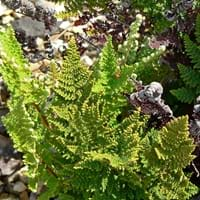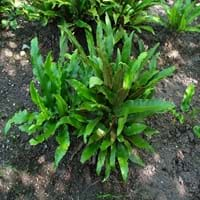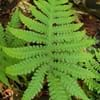Life Span
Annual and Perennial
Perennial
Types
Not Available
Asplenium nidus, Asplenium trichomanes, Asplenium rutamuraria
Number of Varieties
Not Available
Habitat
Chaparral, Rocky areas
Shady Edge, Woodland Garden Dappled Shade
USDA Hardiness Zone
7-10
6-8
Sunset Zone
5, 6, 7, 8, 9, 12, 14, 15, 16, 17, 18, 19, 20, 21, 22, 23, 24
Not Available
Habit
Clump-Forming
Rosette/Stemless
Flower Color
Non Flowering Plant
Not Available
Flower Color Modifier
Bicolor
Bicolor
Fruit Color
Non Fruiting Plant
Not Available
Leaf Color in Spring
Not Available
Yellow green
Leaf Color in Summer
Not Available
Yellow green
Leaf Color in Fall
Not Available
Yellow green
Leaf Color in Winter
Not Available
Yellow green
Leaf Shape
Pinnate
Narrow
Plant Season
Spring, Summer, Fall, Winter
Spring, Summer, Fall
Sunlight
Full Sun, Partial Sun
Full Shade, Partial shade
Growth Rate
Medium
Medium
Type of Soil
Clay, Loam, Sand
Loam, Sand
The pH of Soil
Acidic, Neutral, Alkaline
Neutral, Alkaline
Soil Drainage
Well drained
Well drained
Bloom Time
Not Available
Not Available
Tolerances
Drought
Not Available
Where to Plant?
Ground
Container, Ground, Pot
How to Plant?
Seedlings
Spores
Plant Maintenance
Medium
Medium
Watering Requirements
Needs watering once a week, Never Over-water
Average Water Needs
In Summer
Lots of watering
Lots of watering
In Spring
Moderate
Moderate
In Winter
Average Water
Average Water
Soil pH
Acidic, Neutral, Alkaline
Neutral, Alkaline
Soil Type
Clay, Loam, Sand
Loam, Sand
Soil Drainage Capacity
Well drained
Well drained
Sun Exposure
Full Sun, Partial Sun
Full Shade, Partial Sun
Pruning
Prune to control growth
Remove damaged leaves, Remove dead leaves, Remove dead or diseased plant parts
Fertilizers
All-Purpose Liquid Fertilizer
All-Purpose Liquid Fertilizer, fertilize in summer
Pests and Diseases
Not Available
Red blotch
Plant Tolerance
Drought
Not Available
Flower Petal Number
Single
Single
Foliage Texture
Fine
Bold
Foliage Sheen
Matte
Glossy
Attracts
Not Available
Butterflies
Allergy
Not Available
Toxic
Aesthetic Uses
Ground Cover, Showy Purposes
Showy Purposes
Beauty Benefits
Not Available
Good for skin and hair
Edible Uses
No
Insignificant
Environmental Uses
Not Available
Air purification, Provides ground cover
Medicinal Uses
No Medicinal Use
Astringent, Cholagogue, Diaphoretic, Diuretic, Expectorant, Vulnerary
Part of Plant Used
Whole plant
Leaves
Other Uses
useful as a ground cover
Cosmetics, Used as Ornamental plant, useful as a ground cover
Used As Indoor Plant
No
No
Used As Outdoor Plant
Yes
Yes
Garden Design
Container, Groundcover, Mixed Border, Rock Garden, Wall
Foundation, Mixed Border
Botanical Name
Cheilanthes clevelandii
ASPLENIUM scolopendrium
Common Name
Myriopteris clevelandii
Hart’s Tongue Fern
In Hindi
Myriopteris clevelandii
Burnt Weed
Plant
In German
Myriopteris clevelandii
Burnt Weed
Pflanze
In French
Myriopteris clevelandii
Weed Burnt
Plante
In Spanish
Myriopteris clevelandii
Weed quemado
Planta
In Greek
Myriopteris clevelandii
Burnt ζιζανίων
Φυτό
In Portuguese
Mariopteris clevelandii
Weed Burnt
Plantar
In Polish
Myriopteris clevelandii
spalony Weed
Roślina
In Latin
Myriopteris clevelandii
Holocaustum Weed
planta
Phylum
Tracheophyta
Pteridophyta
Class
Polypodiopsida
Filicopsida
Order
Polypodiales
Polypodiales
Family
Pteridaceae
Aspleniaceae
Genus
Cheilanthes
Asplenium
Clade
Not Available
Eupolypods II
Tribe
Not Available
Not Available
Subfamily
Not Available
Not Available
Difference Between Myriopteris Clevelandii and Burnt Weed
If you are confused whether Myriopteris Clevelandii or Burnt Weed are same, here are some features about those plants to help you choose better. Many people think that these two plants have the same characteristics, but one can see Myriopteris Clevelandii and Burnt Weed Information and learn more about it. Fertilizers required for proper growth of Myriopteris Clevelandii are All-Purpose Liquid Fertilizer, whereas for Burnt Weed fertilizers required are All-Purpose Liquid Fertilizer and fertilize in summer. Hence, one should know the basic difference between Myriopteris Clevelandii and Burnt Weed if you are planning to have them in your garden to enhance its beauty.
<
Flowering PlantsImportance of Myriopteris Clevelandii and Burnt Weed
Want to have the most appropriate plant for your garden? You might want to know the importance of Myriopteris Clevelandii and Burnt Weed. Basically, these two plants vary in many aspects. Compare Myriopteris Clevelandii and Burnt Weed as they differ in many characteristics such as their life, care, benefits, facts, etc. Every gardener must at least have the slightest clue about the plants he wants to plant in his garden. Compare their benefits, which differ in many ways like facts and uses. The medicinal use of Myriopteris Clevelandii is No Medicinal Use whereas of Burnt Weed is Astringent, Cholagogue, Diaphoretic, Diuretic, Expectorant and Vulnerary. Myriopteris Clevelandii has beauty benefits as follows: Not Available while Burnt Weed has beauty benefits as follows: Not Available.
Compare Facts of Myriopteris Clevelandii vs Burnt Weed
How to choose the best garden plant for your garden depending upon its facts? Here garden plant comparison will help you to solve this query. Compare the facts of Myriopteris Clevelandii vs Burnt Weed and know which one to choose. As garden plants have benefits and other uses, allergy is also a major drawback of plants for some people. Allergic reactions of Myriopteris Clevelandii are Not Available whereas of Burnt Weed have Toxic respectively. Having a fruit bearing plant in your garden can be a plus point of your garden. Myriopteris Clevelandii has no showy fruits and Burnt Weed has no showy fruits. Also Myriopteris Clevelandii is not flowering and Burnt Weed is not flowering . You can compare Myriopteris Clevelandii and Burnt Weed facts and facts of other plants too.





